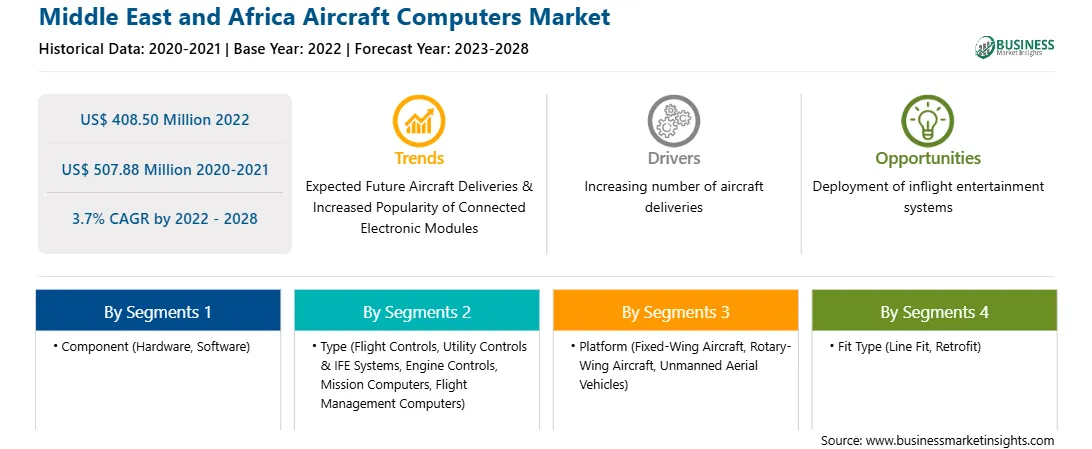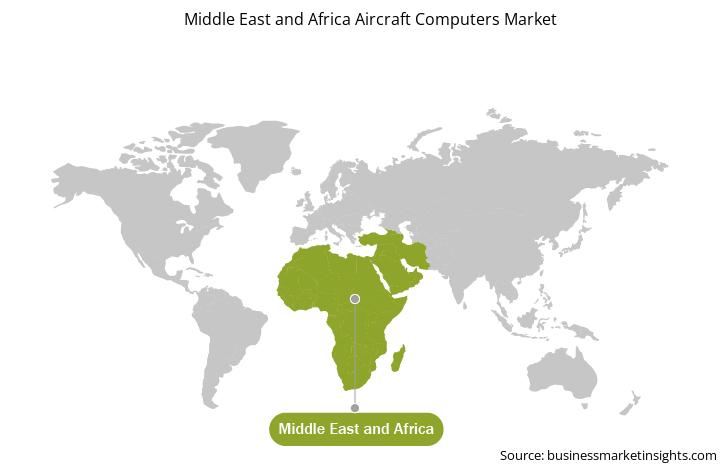An increase in demand for an in-flight entertainment experience and a surge in aircraft renewals and aircraft deliveries are the prominent factors propelling the aircraft computers market. In addition, an increase in the number of passengers, coupled with a rise in the number of aircraft, is driving the demand for in-flight entertainment. The acceleration of Wi-Fi installations onboard aircraft, combined with the large number of passengers carrying one or more digital devices, is boosting in-flight innovations. In March 2022, Safran Passenger Innovations announced its latest software platform named RAVE OS, which offers a modern user interface. In addition, in November 2019, Airbus developed Cabin Intercommunication Data System (CIDS) that allows the cabin crew to manage all cabin functions via easy-to-use centralized interfaces. The CIDS has been installed in more than 10,000 aircraft. Rockwell Collins, Panasonic Avionics, Honeywell Aerospace, and UTC Aerospace Systems are the leading players engaged in providing in-flight entertainment systems. Thus, the rise in deployment of in-flight entertainment systems is bringing new trends in the aircraft computers market.
With the new features and technologies, vendors can attract new customers and expand their footprints in emerging markets. This factor is likely to drive the MEA aircraft computers market.The MEA aircraft computers market is expected to grow at a good CAGR during the forecast period.
MEA Aircraft Computers
Market Revenue and Forecast to 2028 (US$ Million)
Strategic insights for the Middle East and Africa Aircraft Computers provides data-driven analysis of the industry landscape, including current trends, key players, and regional nuances. These insights offer actionable recommendations, enabling readers to differentiate themselves from competitors by identifying untapped segments or developing unique value propositions. Leveraging data analytics, these insights help industry players anticipate the market shifts, whether investors, manufacturers, or other stakeholders. A future-oriented perspective is essential, helping stakeholders anticipate market shifts and position themselves for long-term success in this dynamic region. Ultimately, effective strategic insights empower readers to make informed decisions that drive profitability and achieve their business objectives within the market. The geographic scope of the Middle East and Africa Aircraft Computers refers to the specific areas in which a business operates and competes. Understanding local distinctions, such as diverse consumer preferences (e.g., demand for specific plug types or battery backup durations), varying economic conditions, and regulatory environments, is crucial for tailoring strategies to specific markets. Businesses can expand their reach by identifying underserved areas or adapting their offerings to meet local demands. A clear market focus allows for more effective resource allocation, targeted marketing campaigns, and better positioning against local competitors, ultimately driving growth in those targeted areas.Middle East and Africa Aircraft Computers Strategic Insights

Middle East and Africa Aircraft Computers Report Scope
Report Attribute
Details
Market size in 2022
US$ 408.50 Million
Market Size by 2028
US$ 507.88 Million
Global CAGR (2022 - 2028)
3.7%
Historical Data
2020-2021
Forecast period
2023-2028
Segments Covered
By Component
By Type
By Platform
By Fit Type
Regions and Countries Covered
Middle East and Africa
Market leaders and key company profiles
Middle East and Africa Aircraft Computers Regional Insights

MEA Aircraft Computers Market Segmentation
The North America aircraft computers market is segmented into component, type, platform, fit type, and country. Based on component, the market is segmented into hardware and software. The hardware segment accounted for a larger market share in 2021. In terms of type, the market is segmented into flight controls, utility controls & IFE Systems, engine controls, mission computers, and flight management computers. The flight controls segment accounted for the largest share of the market in 2021. Based on platform, the market is categorized into fixed wing, rotary wing, and unmanned aerial vehicles (UAVs). The fixed wing segment dominated the market in 2021. In terms of fit type, the market is categorized into line fit and retrofit. The line fit segment accounted for a larger share in 2021. Based on country, the MEA aircraft computers market is segmented into Saudi Arabia, South Africa, the UAE, and the Rest of MEA.
BAE Systems; General Dynamics Mission Systems, Inc.; General Electric; Honeywell International Inc.; Lockheed Martin Corporation; Raytheon Technologies; SAAB AB; Safran Group; and Thales Group are among the leading companies in the MEA aircraft computers market.
The Middle East and Africa Aircraft Computers Market is valued at US$ 408.50 Million in 2022, it is projected to reach US$ 507.88 Million by 2028.
As per our report Middle East and Africa Aircraft Computers Market, the market size is valued at US$ 408.50 Million in 2022, projecting it to reach US$ 507.88 Million by 2028. This translates to a CAGR of approximately 3.7% during the forecast period.
The Middle East and Africa Aircraft Computers Market report typically cover these key segments-
The historic period, base year, and forecast period can vary slightly depending on the specific market research report. However, for the Middle East and Africa Aircraft Computers Market report:
The Middle East and Africa Aircraft Computers Market is populated by several key players, each contributing to its growth and innovation. Some of the major players include:
The Middle East and Africa Aircraft Computers Market report is valuable for diverse stakeholders, including:
Essentially, anyone involved in or considering involvement in the Middle East and Africa Aircraft Computers Market value chain can benefit from the information contained in a comprehensive market report.